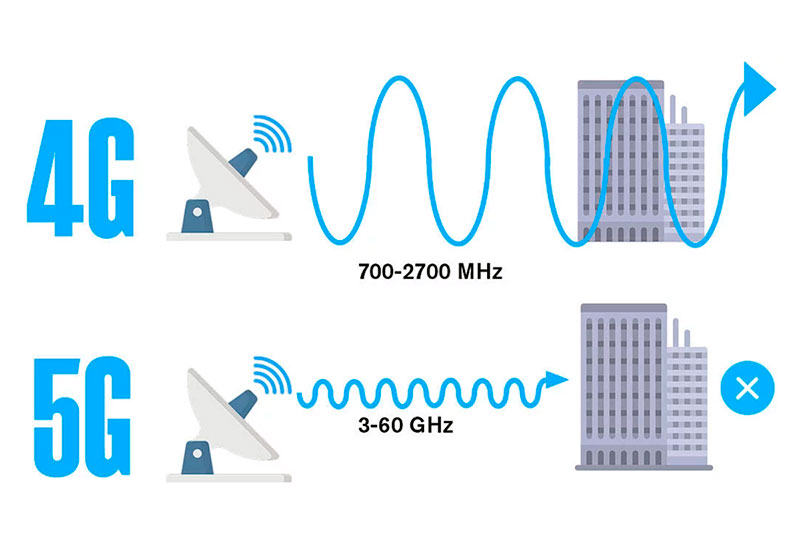Difference between 5G and 4G
The main differences between 5G and 4G (LTE) networks lie in their capabilities, data transfer speeds, latency, and the technologies used. Here are some key differences between 5G and 4G:

Data Transfer Speeds:
5G offers significantly faster data transfer rates compared to 4G. While 4G can provide peak download speeds in the range of tens of megabits per second (Mbps), 5G can reach peak download speeds of several gigabits per second (Gbps). This dramatic increase in speed allows for quicker downloads, seamless streaming of ultra-high-definition content, and faster access to cloud-based applications.
Latency:
5G has significantly lower latency than 4G. Latency is the time it takes for data to travel between the device and the network. 4G typically offers latency in the range of tens of milliseconds, while 5G can achieve latency as low as a few milliseconds. This low latency is crucial for real-time applications like online gaming, augmented reality/virtual reality (AR/VR), and autonomous vehicles.
Network Capacity:
5G networks have a higher capacity to handle more connected devices simultaneously compared to 4G. This increased capacity is essential for supporting the growing number of Internet of Things (IoT) devices and smart technologies that require constant connectivity.
Frequency Bands:
Both 4G and 5G use various frequency bands, but 5G introduces new frequency ranges, including higher-frequency millimeter-wave (mmWave) bands. These higher-frequency bands enable 5G to achieve its ultra-fast speeds but have shorter range and are more susceptible to obstacles like buildings and trees.
Network Architecture:
5G introduces a new network architecture called the 5G Core (5GC), which is more flexible, scalable, and cloud-based compared to the architecture used in 4G (LTE). This new architecture allows for better resource allocation, network slicing, and support for various use cases.
Advanced Technologies:
5G utilizes advanced technologies like Massive MIMO (Multiple Input, Multiple Output), beamforming, and full-duplex communication to optimize spectrum usage, improve coverage, and enhance the efficiency of data transmission.
Use Cases and Applications:
5G is designed to support a wide range of applications beyond what 4G can efficiently handle. These include augmented reality, virtual reality, ultra-high-definition video streaming, remote surgery, smart cities, industrial automation, and more.
Energy Efficiency:
5G is expected to be more energy-efficient than 4G, allowing devices to consume less power during data transmission and communication, which is essential for extending battery life in mobile devices and supporting IoT devices with long battery life.
Overall, 5G represents a significant leap forward in mobile network technology, offering faster speeds, lower latency, and increased capacity, which enables a whole new range of applications and services not possible or practical with 4G networks. However, the rollout of 5G networks also requires substantial infrastructure investments and the availability of compatible 5G devices. As 5G technology continues to evolve, it is expected to become the backbone of future communications and enable transformative technologies across various industries.


